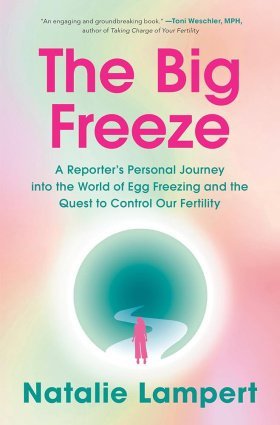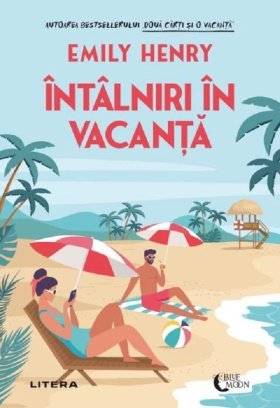But I hadn’t come this far to stop asking questions. I reminded myself that I’d already begun to go beyond the technology’s surface-level explanations. And so, burgeoning science journalist that I apparently now was, I would keep going, keep delving deeper to confront egg freezing’s implications beyond its sheen of complex science and oh-so-shiny promises.
Seesawing and Second Thoughts
Early spring. The end of a long day, back-to-back classes, and hours writing at the NYU library. Ben and I met friends for dinner on the Lower East Side. On the drive home, I rolled down the passenger-seat window in Ben’s rattly Civic and watched the twinkling Manhattan skyline recede in the side mirror. Cars bound for Brooklyn were backed up, their headlights piercing and brilliant. It was a velvety mid-March evening and the air had a pulse to it: the promise of seesawing seasons, of bloom. We climbed the five flights of stairs to my apartment and fell into bed, exhausted. Ben was, predictably, sound asleep within minutes. I lay awake, my mind racing, for no particular reason, just a lot of reasons. I felt completely overwhelmed by all I was juggling: my thesis and graduate school work, my fascinating internship at a magazine, my new relationship with Ben. And on top of my overcommitted day-to-day was this business of trying to figure out my fertility and make a decision about egg freezing, all of which was proving to be more complicated than I had bargained for.
Outside, bodega doors banged shut and an occasional siren wailed. My head rested on Ben’s bare chest, his arm wrapped around me and his hand cupping my breast. I blinked at the darkness. I wanted to be comforted by our tangle, our intertwined parts that at times fit perfectly, but his arm became heavier, our skin sweatier, the street noise louder, until all I could hear and feel was my galloping heart.
Something had shifted in how I’d come to think about egg freezing—and my fertility in general—since meeting Ben. While I know I can be a parent on my own, having children has, for me, always been tied to the idea of a committed relationship. I have always imagined having kids with all the basics in place: a fulfilling career, a savings account, health insurance. And a partner.
I broached the subject of kids with Ben sometime after our first weekend away together and before he met my parents. He told me he had no doubts that he would make a great father someday.
“Oh, yeah?” I chuckled. “And how do you know?” I tried to keep my tone casual—could I have asked for a better reply?—but I could feel my dimples giving me away.
“I’ll just do everything my dad did, because he was the best dad ever,” Ben answered.
My heart fluttered. He had said it so simply, so sincerely that I immediately trusted the pure place it came from. I murmured something in response, then sat back to savor the moment. I took a long look at Ben. He was nursing his beer, his tan, floppy loafers hanging off the barstool’s bottom rung. I had come to recognize the affable smile he wore, confident and a little coy. I imagined him approaching fatherhood with this same self-assuredness. I could easily picture him as a dad, running around a grassy backyard with a toddler on his shoulders and another at his feet. But imagining him accompanying me to egg freezing appointments and plunging hormone injections into my butt cheek? Couldn’t see it. And not just because Ben had a paralyzing fear of needles. I couldn’t imagine it because the scene did not fit in the nice narrative that had formed in my head about the story of my life.
I initially saw egg freezing as an independent, solo thing, a way for me to claim ownership of something that had never felt as if it was in my control. Now that I was in a relationship—getting serious quickly, in a good way—why did it make sense for me to freeze my eggs? I didn’t know how or whether Ben fit into my egg freezing decision. He’d been supportive since day one and showed genuine curiosity about all I’d been learning. I wondered if he had an opinion about if and when I might do it, although I wasn’t sure I wanted to hear it. Maybe, I thought, I should forgo freezing and start trying to get pregnant earlier than I had planned.
But still, lying in bed most nights with Ben’s arm wrapped around me, I’d find myself seized with anxiety about the possibility I might never be pregnant with my own eggs. That perhaps my missing parts wouldn’t amount to anything. Thoughts swirling, I would remember similar disquieting nights, like the ones in Sri Lanka years ago when I’d jerk awake, gripping my right side, in some kind of phantom pain summoned by memories of my long-ago surgeries.
Middle-of-the-night thoughts and nagging worries that come and go over years, as these do for me, tend to have connective tissue that is as strong as it is stubborn. When would the thought of accidentally becoming pregnant stop seeming like such a catastrophe? When would the possibility of never being pregnant stop haunting me? How much information and empowerment would it take to banish this angst from my—from every woman’s—head?
It had been several months since my last appointment with Dr. Noyes. She had sold me on the powerful potential of egg freezing; her ringing endorsement lingered in my mind. I had been surprised and pleased by the strength I heard in my voice when I told her I was going to freeze my eggs. But since that feet-in-stirrups declaration, I felt less sure. When I asked for help understanding the basic mechanics of egg freezing, I had secretly hoped that if I could understand at least at a rudimentary level how the process worked, I would have an aha moment that would make it easier for me to feel good about the decision I’d made. Because I had made a decision, lying there in my floppy gown, a goofy grin on my face because my ovary was doing great. You know too much, Dr. Noyes had said to me at my second appointment. That’s the problem. She’d said it facetiously, but I was beginning to think she was right. Observing egg freezing in action had helped demystify the science some, but it had left me with more questions, not fewer. It was almost as if, the more time I spent piecing together what I was learning about egg freezing, trying to get it all straight, the more of a Pandora’s box it all seemed to be.
I slipped out of bed and walked to the kitchen in my underwear, the wood floor cool beneath my bare feet. My phone screen read 1:11 a.m. I filled a glass with water and untwisted a half-empty bag of candy. In the living room, I curled up in my favorite wicker chair, which I’d had since college. Round and deep, a worn-in nest. The velvety air and laughing with friends that had punctuated the evening earlier felt so distant now. I closed my eyes and dozed fitfully, waking with candy stains on my fingers. It was still dark out. I opened my copy of Taking Charge of Your Fertility and, with a pink headlamp strapped to my forehead, read about cervical mucus and G-spots until it began to grow light.
Skip Notes
*1 Later, I learned that about one in ten women uses two methods of contraception, such as condoms and the Pill, simultaneously. So maybe also using condoms with my boyfriend was overkill, but the doctor really could’ve reacted better.
*2 Dr. Lubna Pal, a professor of obstetrics and gynecology at Yale School of Medicine who co-authored the study, noted: “We found that 40 percent of women in the survey believed that their ovaries continue to produce new eggs during reproductive years. This misperception is of particular concern, especially so in a society where women are increasingly delaying pregnancy.”
*3 The lack of communication is, in part, because health insurance doesn’t reimburse doctors for spending more time talking to their patients. Also, some OB/GYNs don’t discuss fertility with younger patients because they don’t want to unintentionally add to the pressure to have children that many young women already face.
*4 Names have been changed to protect their privacy.
*5 Having an abortion very rarely affects a person’s fertility or ability to become pregnant in the future. But many women have been socialized to think that it does.
*6 Only mature eggs can be fertilized. But some clinics freeze immature eggs as well, because there’s a small chance some might mature after the thawing process. Also, since egg freezing is intended for the long term, there’s the hope that new technology or techniques will be developed in the future that would make it possible to use these oocytes.

8 Ready, Set, Trigger Shot

Remy: Bring On the Eggs
By the end of the several days of hormone injections, Remy felt like she was about to pop. Legitimately feel like I am a goose waddling around with a gut full of (very expensive, like 14-karat) eggs, she texted me on the last day of her shots. We’d kept in touch since she’d started the egg freezing medications. She felt more or less okay, save for the intense bloating that was unlike anything she had ever experienced before. As her egg retrieval day neared, anxiety began to creep in, laced with humor in her texts: I’m so scared of something happening to them hahaa I’m hyper-conscious of my every move. MUST PROTECT THE EGGS AT ALL COSTS.
I flew to Nashville for Remy’s trigger shot and egg retrieval. This would be the first time I saw these parts of the egg freezing process up close. The night of that crucial last injection, I drove from my hotel to an apartment on the other side of town. Remy’s good friend Leah,[*1] also an anesthesia resident, lived there. When I arrived, Remy and Leah were draped on an overstuffed couch, watching Crazy Rich Asians on Netflix. A typical millennial Saturday night, save for the various vials of drugs and needles scattered on the kitchen counter. The two women howled at the movie, heads thrown back in laughter. Remy had been up for twenty-two hours by this point, having come off one of her long hospital shifts. She was wearing black leggings and a roomy gray sweatshirt, her hair in a high ponytail. Her feet were bare—pink toenails, from a recent pedicure—and her face fresh, makeup-free. She looked twenty-three, not thirty-three.
Outside, the skyline was gray and darkening. Leah turned off the TV. After ten days of injecting the hormone shots herself, Remy had decided to ask Leah to do this final one. This shot would go just above Remy’s right butt cheek. Remy’s biggest takeaway from the injection demonstration appointment at the fertility clinic had been learning what not to stress about throughout the egg freezing process and what to definitely stress about. In reassuring words, the nurse had told Remy not to worry too much about always injecting the shots at the exact same time each night. But Dr. Lewis, Remy remembered, had been explicit about the timing of the trigger shot. “If you take it too early,” she’d warned, “you’ll ovulate too soon and release all your eggs and I’ll have nothing. If you inject it too late, the eggs will be immature and I’ll have nothing.” At the time, Remy had half-groaned, already worried that she’d make a mistake and mess up the timing. The clinic had provided Remy with a video tutorial to review before taking the trigger shot, which she watched, but she still felt somewhat confused and nervous because it had different directions than the other meds she’d been injecting.
When it was nearly time, Remy and Leah stood at the kitchen counter and took stock of the vials and syringes spread out in front of them. Remy got to work reconstituting. The trigger shot is a powder that needs to be dissolved in saline. Mixed, but not shaken.
“Does that look ready?” Remy asked Leah.
Leah peered at the vial. “Maybe swirl it one more time.”
Remy reached for a long needle. “Are you sure the twenty-seven gauge is the one you inject with?” Leah asked.
“Hundred percent sure,” Remy replied. “I mean, I think so. It’s really long but it’s not supposed to go all the way in. They told me if I hit the bone it wouldn’t hurt, not to worry. The periosteum is so sensitive, are you kidding me? That would fucking hurt.”
“It would definitely fucking hurt,” Leah echoed.
“I still don’t understand how women who aren’t in medicine do this,” said Remy, glancing at her watch to check the time. “I mean, reconstituting meds is our life. But this isn’t easy stuff.”[*2]
A few minutes later, the trigger shot was ready. Remy pulled down her leggings partway. She looked at Leah. “I trust you, I love you, let’s do this.” She closed her eyes, turned around so her backside faced Leah, and braced against the kitchen sink. Leah stuck the needle into the skin just above Remy’s butt cheek and pushed the syringe, then pulled it back out. Remy exhaled loudly. “Okayyyy,” she said. “Wait. That was the least painful of all of them. Why was that so easy?”
“Well, your butt’s not as sensitive as you’d think,” Leah said, at which Remy gave a sarcastic laugh.
“Man, I made a big deal of this,” said Remy, adjusting her leggings. “Wasn’t that shot supposed to be a big deal?” She leaned over to hug Leah. “Oh my God, I’m so happy you did it. Thank you so much.”
Leah grinned, hugging Remy back. “I just gave you a baby!”
“Like, thirty babies,” Remy said, giggling with relief.

























